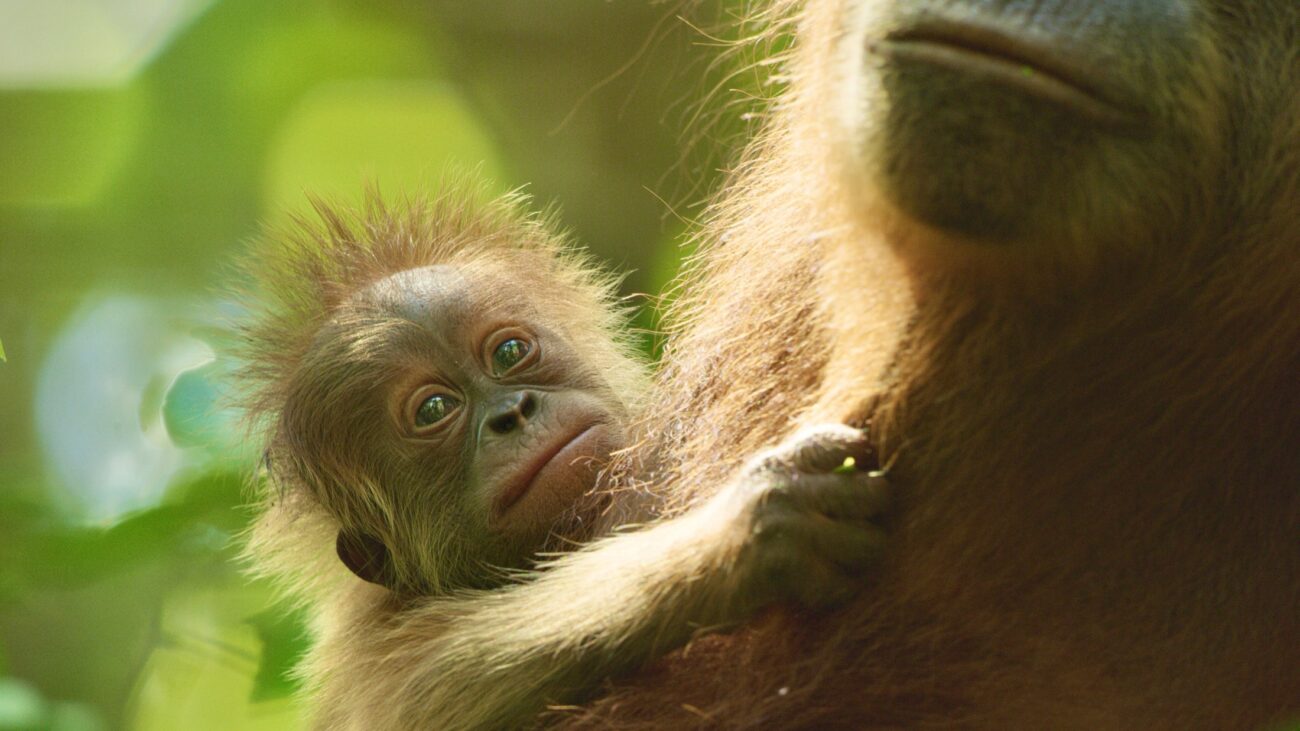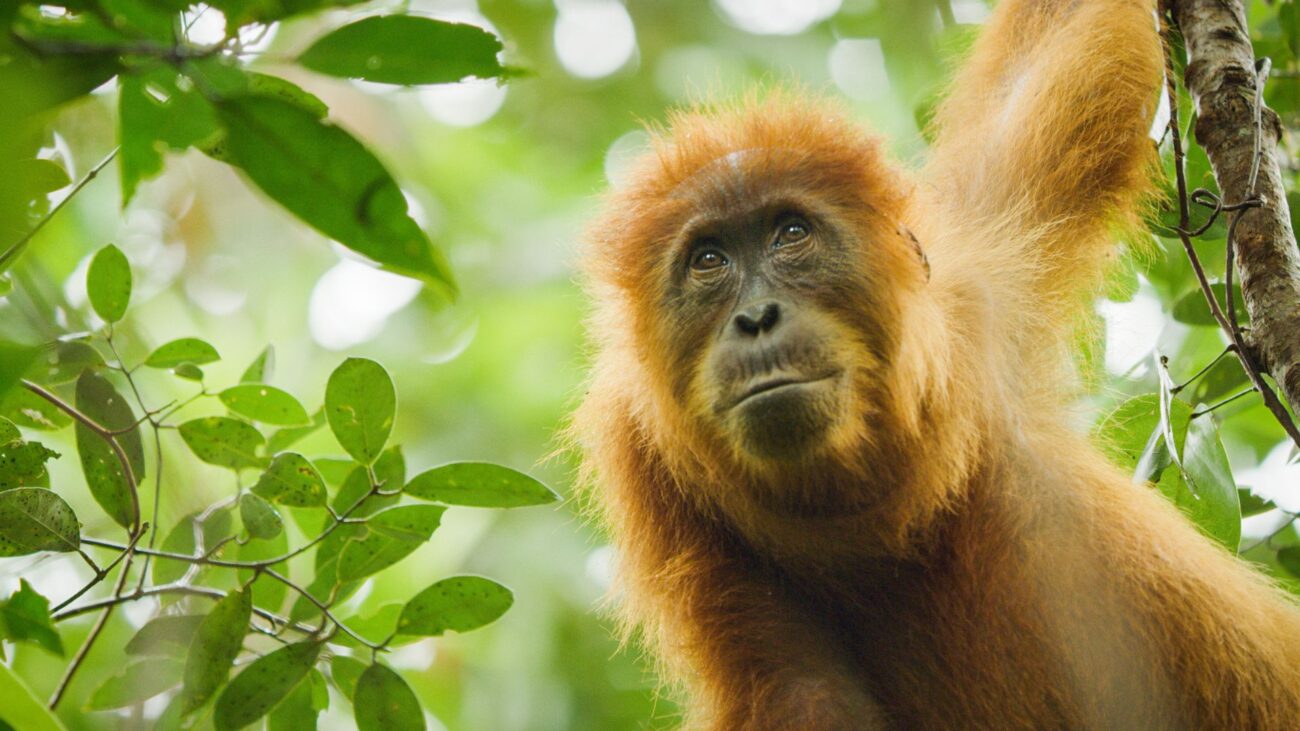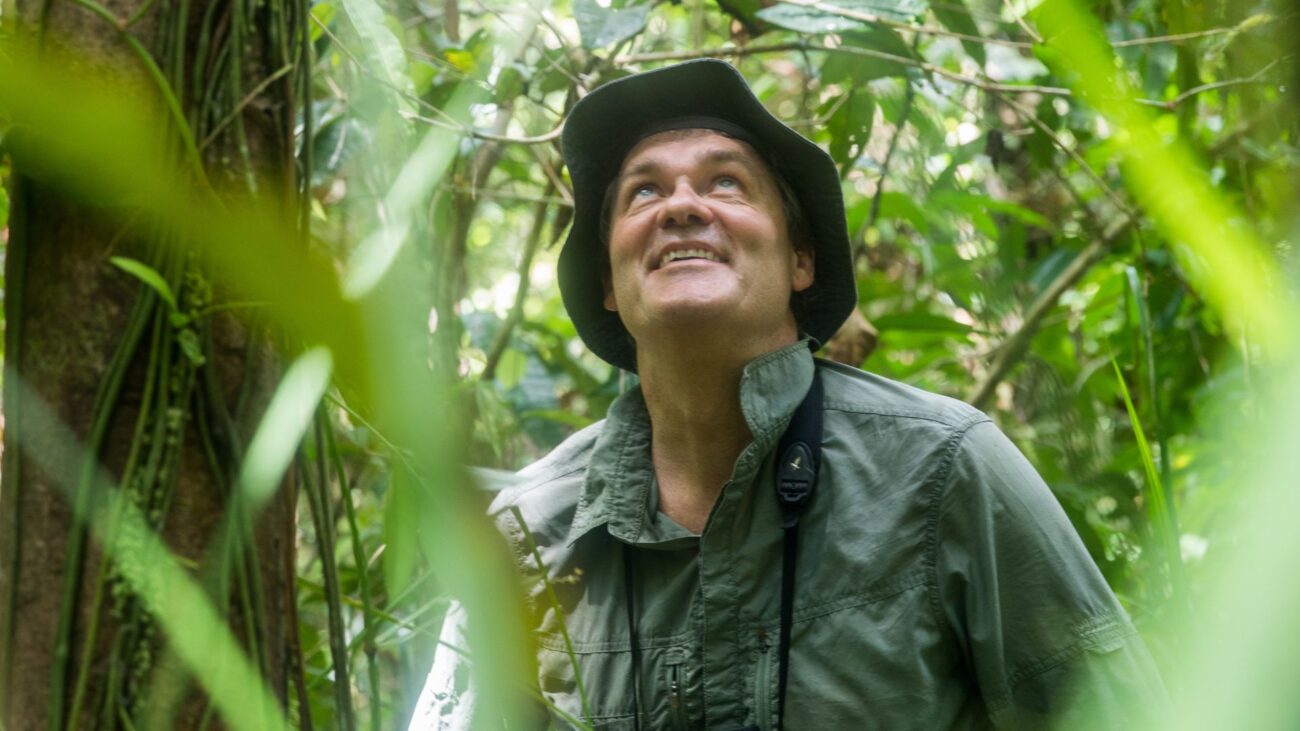
My first experience filming orangutans was for Our Planet, which premiered on Netflix in 2020. That sequence became one of my favourites and, also, proved to be very popular with the audience. After all, who doesn’t love an orangutan? They’re easily among the top ten favourite animals for many people, which certainly helped get the project off the ground.
Beyond the public’s fascination with these incredible creatures—one of our closest relatives—I was personally drawn to the project because, astonishingly, no one had ever made a feature-length film exclusively focused on wild orangutans. Typically, people’s knowledge of these animals comes from programs about rehabilitation or documentaries highlighting habitat loss—a serious issue that has escalated over recent decades. So, the chance to create a 75-minute film showcasing the behaviour of wild orangutans, while building on what we accomplished in Our Planet, was a major motivator for me.
For many, the journey to Sumatra begins in Medan, its bustling capital and Indonesia’s third-largest city. The contrast between Medan’s chaotic, polluted streets and the pristine forests of Suaq and Gunung Leuser National Park, where the orangutans live, couldn’t be starker.
Reaching Suaq from Medan is an adventure in itself. It’s a long, slow journey, often taking nearly 12 hours on single-lane roads clogged with traffic. It’s always a relief when one finally arrives in the small rural village of Pasi Lembang, as it marks the final leg of the trip—a motorized canoe ride to the Suaq reserve. How long that part takes depends on the river’s depth. When the water is low, navigating submerged branches and logs can make for a more challenging ride. While you’re unlikely to see orangutans during this river journey, there’s are lots of other things to look out for, despite the noise and disturbance of the outboard engines. You might spot langurs, macaques, monitor lizards, kingfishers, or even rhinoceros hornbills flying overhead.
On the river trip, one can’t help but notice the stark contrast between the two sides of the river. While the right bank remains pristine forest, the left is increasingly dominated by agricultural development, particularly oil palm plantations. The pace of development is relentless – with each visit revealing more of the forest lost.

Spotting orangutans in the wild is never guaranteed. It wasn’t uncommon to go two or three days without seeing one, so when an orangutan did appear, it always felt like a special event.
I’ve had many memorable encounters with these incredible creatures, whether it was Eden using tools, Ellie nurturing her son, Emen or Split Lip Otto chasing off Suli the Unflanged. But perhaps the most remarkable was witnessing Titan, the large male featured in our film, chasing two civet cats in an apparent attempt to hunt them. Although we couldn’t capture this on film, it was a striking reminder that while orangutans are mostly vegetarian, they’ll seize any opportunity for easy protein. Something few people are aware of.
Orangutans spend most of their day in the canopy, often hidden by branches and foliage. It was rare to see them low down and unobscured, but when you did it was a privileged experience. They might do this, for instance, to feed on termites at the base of a rotten trunk. My closest encounter was with Eden. On one of our filming days, she came down from the canopy and sat a metre or two directly above us watching what we were doing: a case of us looking at her looking at us. Wonderful!

Filming in Suaq was, without a doubt, the most challenging assignment of my career. Rainforests are my favourite ecosystem, and I’ve filmed in many of them across the globe, but Suaq, with its swampy terrain and elusive orangutans, posed the ultimate test. The swamp forest keeps you perpetually ankle-deep—or worse—in water, while a maze of aerial roots threatens to trip you at every step. This is especially treacherous for cameramen and assistants hauling heavy equipment. Another occupational hazard of working in Suaq comes from the oil of the ringus tree, which was hard to avoid. If it gets on your skin, it can cause an itchy, weeping rash. The reaction varies from person to person. Unfortunately for Matt, one of the principal cameramen, it wasn’t good and he spent most shoots with the rash all over his hands.
But as tough as the terrain is, it’s the orangutans themselves that make filming so challenging. Largely solitary, they spend nearly all their time in the treetops. Just catching a glimpse of these chunky orange apes through the canopy is tough, let alone filming their behaviour. On some days, we set up the camera 50 times or more, only to capture mere seconds of usable footage.
It wasn’t unusual to spend days in the forest without spotting a single orangutan. Once you located one, the key was staying with it until it nested. By doing this, you could be sure of where it would be the following morning, assuming you reached the spot before sunrise. Without this strategy, finding them from scratch was incredibly difficult. Despite their size, orangutans blend into the forest surprisingly well. Aside from the occasional call of a flanged male, they rarely give themselves away vocally. The only reliable clue was the sound of branches swaying as they moved between trees, though even then, it was easy to confuse their ‘swishing’ sounds with the louder ‘crashes’ of monkeys.

Traditional methods for filming arboreal animals, like tree platforms or canopy towers, weren’t viable in Suaq. The swamp made transporting and setting up heavy equipment nearly impossible, and the unpredictable movements of the orangutans made such setups ineffective anyway. However, drones transformed our filming process. Just as we began shooting, advances in drone technology (smaller models with long battery life) allowed us to capture footage of wild orangutans in the canopy without ever needing to climb a tree— something that hadn’t been done before. It took time to habituate the orangutans to the drones, but by the end, they were completely unfazed by them. The drone footage was pivotal to our film, though about 80% of the final footage still came from ground-level shots with long lenses.
The plight of orangutans is widely known. Habitat loss across their range has left the Sumatran orangutan population at around 14,000 and steadily declining. While there have been many excellent films focussing on conservation and the threats orangutans face, I wanted this project to be different. My goal was to spotlight the complexity of orangutan society and behaviour, revealing just how remarkable these creatures are. After all, it’s hard to truly care about something you don’t understand. My hope is that The Secret Lives of Orangutans offers audiences a deeper appreciation for wild orangutans, as they’ve never seen them before.
You can help protect Sumatra's Orangutans. Click to get updates
